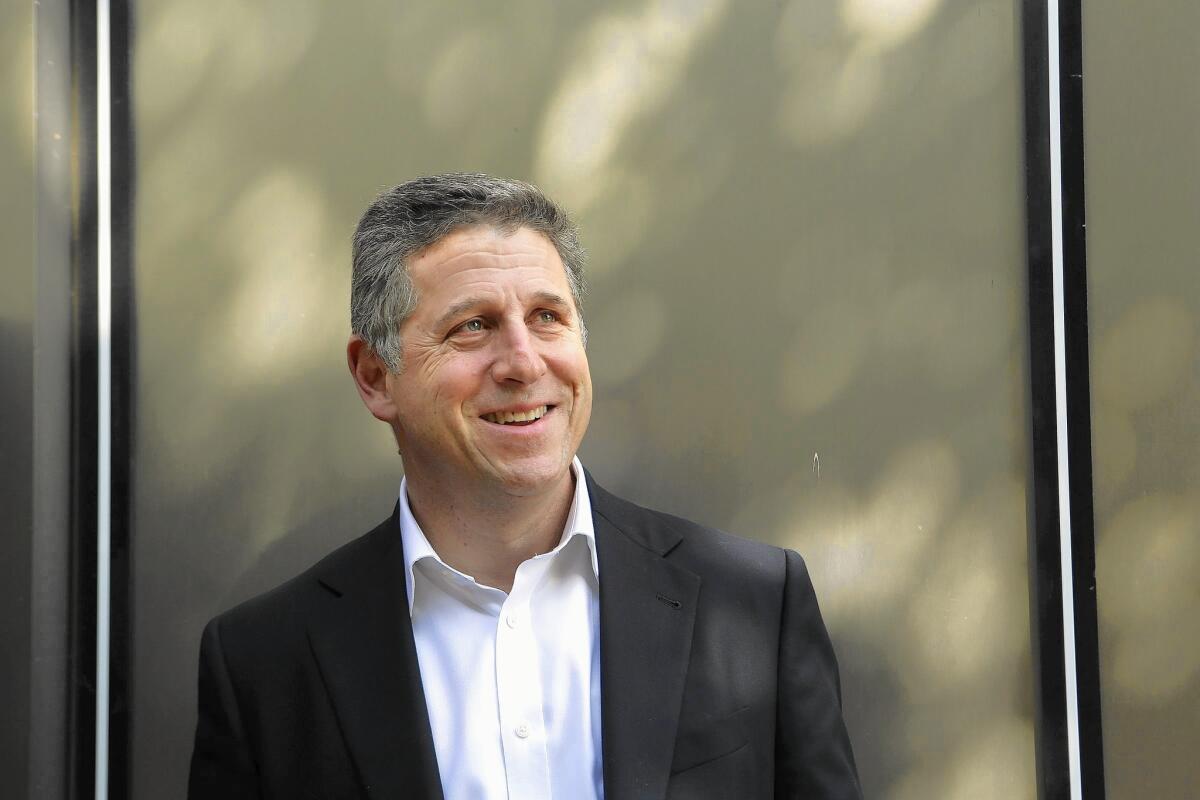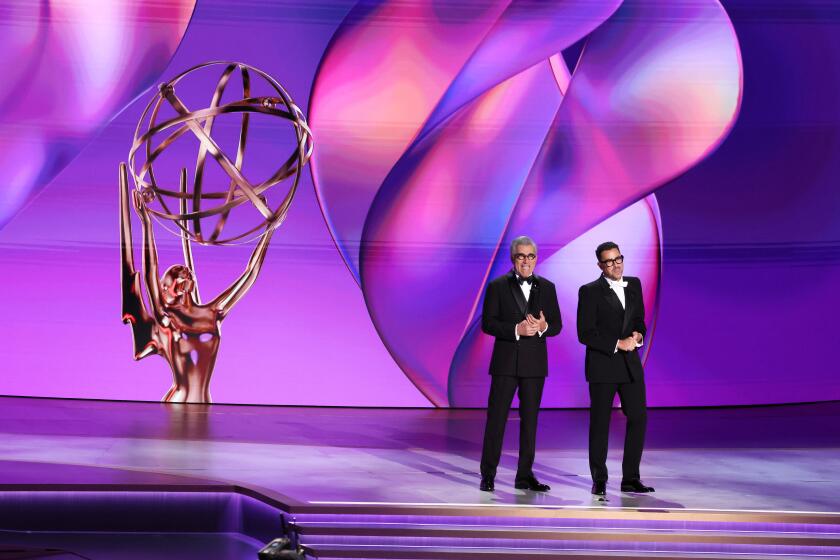Rdio cues up traditional radio stations, hoping to get an edge on competition

The increasingly crowded streaming music industry is starting to look a little more like old-fashioned radio.
San Francisco digital music company Rdio Inc., hoping not to be lost amid a sea of new competition, is adding traditional AM/FM outlets to its service. The rollout, which starts Wednesday, includes 460 stations owned and operated by stakeholder Atlanta-based Cumulus Media Inc.
Rdio, like rivals such as Swedish giant Spotify, gives its users on-demand access to millions of songs through their smartphones, tablets and computers. Users get music recommendations based on data the company collects about listeners’ preferences and past listening habits.
Stunning photos, celebrity homes: Get the free weekly Hot Property newsletter >>
Now the tech firm hopes long-running stations such as Cumulus’ KLOS-FM (95.5) in Los Angeles and KFOG-FM (104.5) in San Francisco, along with talk radio and sports outlets, will help draw more listeners and advertising dollars as Rdio faces increasing competition from the likes of Apple Inc. and Google Inc.
Streaming companies have for years bet on the appeal of unlimited user access to vast music catalogs, through which users can listen to any track at any time. But analysts have suggested this may not be how most people actually want to listen to music.
“Adding radio feels very natural to me,” said Russ Crupnick, managing partner of research firm MusicWatch. “It recognizes there’s this real diversity in the way people listen. You may want some news or traffic in between listening to a Taylor Swift album.”
Other players in the streaming industry have already embraced the appeal of live stations driven by DJs and music experts rather than computer algorithms.
Apple in June kicked off the maiden broadcast of its live Beats 1 radio station, led by BBC Radio 1 alum Zane Lowe. The 24-hour station, programmed from London, New York and Los Angeles, features shows curated by Dr. Dre and Pharrell Williams. That launch coincided with the debut of the Cupertino, Calif., tech giant’s Apple Music streaming service.
“If you’ve read the tech press over the last few months, you’d think the tech business invented radio,” Rdio’s chief executive, Anthony Bay, said in an interview. “Radio is still the most widely used form of audio. There’s a big audience out there.”
Despite the influx of digital upstarts, terrestrial radio still has a surprisingly large reach.
According to Nielsen, more than 90% of U.S. adults listen to radio every week. Adults spend an average of 13 hours a week listening to radio, Nielsen says, compared with 29 minutes with streaming audio.
Rdio is far from the first player to offer a multitude of terrestrial stations in one online package. IHeartMedia Inc., the broadcasting behemoth formerly known as Clear Channel, launched its iHeartRadio iPhone app in 2008. Its current incarnation boasts more than 2,000 live stations, including 858 owned or operated by iHeartMedia. The app and website have about 70 million registered users, according to the company.
The publicly traded satellite radio provider Sirius XM has for years relied on personality-driven shows to draw subscribers. It has more than 175 channels, with DJs including Tom Petty and Steve Earle.
But Bay said his company’s offering has some advantages. For example, paid subscribers can download tracks for later listening. Nonpaying listeners can mark songs as favorites and start their customized stations based on songs played during the broadcast.
The company is in talks with other broadcasters and will add more U.S. and international stations over the next six to 12 months, he said.
Rdio, founded in 2010 by Skype co-creator Janus Friis, charges $9.99 a month for unlimited access to its 35-million song library, and it has added new features in recent years to stay competitive. In May it debuted a $3.99-a-month tier that offers ad-free Pandora-like stations, plus 25 downloads at a time.
Rdio has never revealed how many people use its service, but it is thought to lag Spotify, which counts 20 million paying subscribers and 55 million consumers who listen for free with commercials. Pandora says it gets about 80 million monthly listeners.
Eddy Cue, Apple’s senior vice president of Internet software and services, said last week that 11 million people were using the free trial version of its new music app.
Others, such as Jay Z’s Tidal, have struggled to find a big audience amid the growing competition.
In 2013, Cumulus Media entered an agreement to take a 15% stake in Rdio’s parent company, Pulser Media, in exchange for $75 million in marketing over five years. That deal allowed Cumulus to plant a flag in the increasingly important streaming business as it chases iHeartMedia.
Cumulus stations are already available on iHeartRadio, but analysts said the Rdio partnership will give the firm more control over its stations online.
Cumulus’ stock price has sagged lately, and has fallen about 65% in the last 12 months. It closed Tuesday at $1.48 a share, up 1.4%.
Investors are expected to welcome the development because old-school radio companies need to adapt to a fast-changing media environment, said Tom Taylor, a longtime radio expert who publishes a daily newsletter about the industry.
“Wall Street is looking at digital radio and seeing that it’s a coming force, and they’re asking what their strategy is,” Taylor said.
MORE:
Donald Trump stops attacking Fox News Channel’s Megyn Kelly
New England Patriots owner Robert Kraft exits Viacom board
Media stocks catch their breath after a two-day meltdown
More to Read
From the Oscars to the Emmys.
Get the Envelope newsletter for exclusive awards season coverage, behind-the-scenes stories from the Envelope podcast and columnist Glenn Whipp’s must-read analysis.
You may occasionally receive promotional content from the Los Angeles Times.







